Analysis and Research on Interference of Bluetooth Frequency Hopping Network Piconet
Abstract: This paper analyzes the working principle of different cheek-hopping sections between Bluetooth piconets and the impact of the number of frequency hopping collisions on the actual throughput, and proposes a method to calculate the number of overlaps between different piconet hopping sections and network throughput Calculation formula. The simulation results show that the number of piconet segment overlaps is the main factor affecting throughput.
Keywords: Bluetooth piconet throughput frequency hopping collision
Bluetooth (B1ueteoth) wireless communication technology provides a short-range, low-cost, low-power wireless solution for various communication devices and computer peripherals. Bluetooth network is a multi-channel mode topology network. The Bluetooth devices can establish a point-to-point connection within the communication range. They can also share a channel to form a piconet (Piconet), and can also join multiple Piconets at the same time to form a scatternet. Each Piconet uses an independent frequency-hopping sequence. The frequency-hopping sequence of Piconet's internal devices is orthogonal and does not cause interference. However, different Pieonet problems may cause hopping collision interference due to frequency overlap, resulting in the loss of transmitted packets, thereby reducing network throughput. And this collision will increase with the increase in the number of Piconet. The equipment in Piconet can be divided into master equipment (Master) and slave equipment (Slave). The master starts sending packets to the slave in even slots (Slot), and the slave returns packets to the master in odd slots. Each Piconet consists of up to 8 active devices (Actlve devlce). At any time, there can be only one device as the Master, and the remaining devices as SIave. The roles between Master and S1dve can be interchanged with each other. The Bluetooth frequency hopping collision is caused by the overlapping of frequency hopping sections. The literature gives an inter-Piconet interference analysis model. The literature uses the probability analysis method to propose the upper bound of the error probability and the lower bound of throughput of the co-channel collision packet of the Bluetooth network. Based on the principle of Bluetooth frequency hopping, this paper builds a Bluetooth frequency hopping simulation platform, and analyzes the throughput of different packet lengths and different combinations of Piconet and the number of overlapping frequency hopping sections between Pieonet. It is confirmed that the decrease in throughput is caused by the overlapping of frequency hopping sections between Piconets, but the effect of the slot length on the throughput is small. When the number of piconets is greater than 10, the frequency utilization rate is less than 50%. This study provides important research value for the construction of Bluetooth Scatteret with low collision and high throughput. According to the analysis results, the low collision Pieonet network selection algorithm is studied.
1 Bluetooth frequency hopping principle and collision analysis
1.1 Principle of frequency selection
Bluetooth has five types of hopping sequences, including: Page hopping sequence, Page response sequence, Inquiry sequence, Inqmry response sequence) and channel hopping sequenee. The first four items are mainly used in the stage of how to establish a connection between Bluetooth devices, and the channel frequency hopping sequence is used for the operation state after the connection between Bluettmth devices.
The block diagram of the principle of frequency hopping selection is shown in Figure 1. The selection process is completed by two programs: first select a sequence, and then map the sequence to the frequency hopping index. The Master's Bluetooth device address (BD_ADDR) is used to determine the frequency hopping sequence, and the Master's CLK is used to determine the phase of the frequency hopping sequence, and then the sequence's frequency hopping sequence number corresponds to the channel of the 79-hops register. In the online operation state, the specific process of frequency hopping selection is: first determine the current frequency hopping section, each section has 32 continuous channels, and use different channels as the starting channel of the section , Can be divided into 79 frequency-hopping system sections; rearrange the 32 channels in this section to form a frequency-hopping sequence. After every 32 Master slots, it will jump to the next section, and 16 channels will be shifted between two consecutive sections, that is, the 16 channels after the previous section overlap with the 16 channels before the next section of. In the same time slot, the sections used for Master and Slave transmission are shifted by 32 channels, that is, the sections used for Master and Slave transmission do not overlap. Repeating this shift, after 79 shifts, that is, after 79 × 32 Master time slots, it returns to the original frequency hopping section.
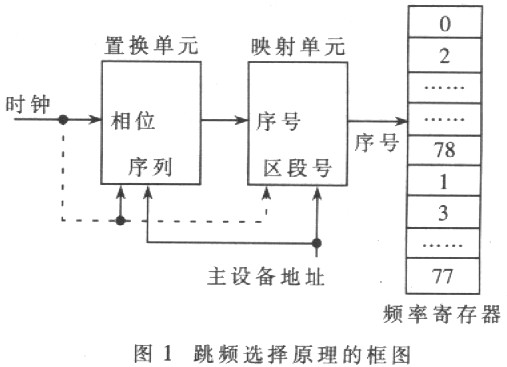
1.2 Bluetooth frequency hopping collision analysis
1.2.1 Frequency hopping collision overlap number algorithm In a Bluetooth network, more than two Piconets can exist at the same time. Since each Piconet has its own frequency hopping section, and its frequency hopping sequence is independent, there will be no collision within Piconet's internal devices. But Piconet uses the same frequency range. When two Piconets jump to the same frequency hopping sequence number, the frequency hopping frequencies will collide and cause interference. The schematic diagram of section overlap between Piconet is shown in Figure 2. The greater the number of overlapping frequency hopping sections between two piconets, the greater the probability of the number of collisions between them. On the contrary, if the frequency hopping sections do not overlap, no frequency hopping collision will occur.
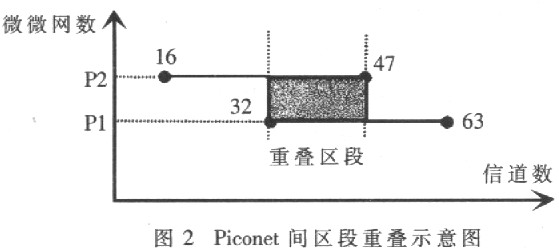
Let d denote the displacement distance of the section, IA the starting index number of Piconet A, IB the starting index number of Piconet B, Os the overlapping number between two Piconets, and mod M the modulo M operation. Then the calculation method of the overlap number of the frequency hopping section between the two piconets is:

1.2.2 Algorithm for the total number of overlaps in frequency hopping sections
(1) The algorithm for the maximum total number of overlaps in the frequency hopping section sets the number of pairwise overlap combinations between n devices: Cn2 = n (n-1) / 2. The maximum number of overlapping frequency hopping sections between two devices is 32. Therefore, the maximum total number of overlaps for n devices is 32Cn2.
(2) Algorithm for minimum overlap number of frequency hopping sections between more than 3 devices
Since each frequency hopping section has 32 channels, the total number of channels of n devices is 32n, and the total number of frequency hopping channels is 79. Let Rn = 32nmod 79, yn = [32n / 79], [x] means rounding operation to x. Then the minimum total number of overlaps for n devices is:

2 Bluetooth frequency hopping network throughput algorithm When a frequency hopping frequency collision occurs, time slot loss will occur, resulting in a drop in throughput. Let mct denote the number of timeslot collisions in the Master; sct the number of timeslot collisions in the Slave; K (i) the number of devices; M the number of frequency hopping executions; Slotn the length of the time slot occupied by the Bluetooth packet:


3 Simulation experiment and analysis Simulink is used to construct the simulation platform, assuming that the entire Bluetooth network is synchronous, 100 combined simulations are performed for each overlap number, and each combined frequency hopping performs 2 × 106 time slots. Figure 3 shows the relationship between the number of collisions and the throughput when the overlapping number of frequency hopping sections of the two devices is 0 to 32. Figure 4 shows the relationship between the number of collisions and the throughput when the number of overlaps is 17 to 96 for three devices. Both indicate that the greater the number of overlapping frequency hopping sections between Piconets, the greater the number of frequency hopping collisions, and the throughput of the network system will also decrease.
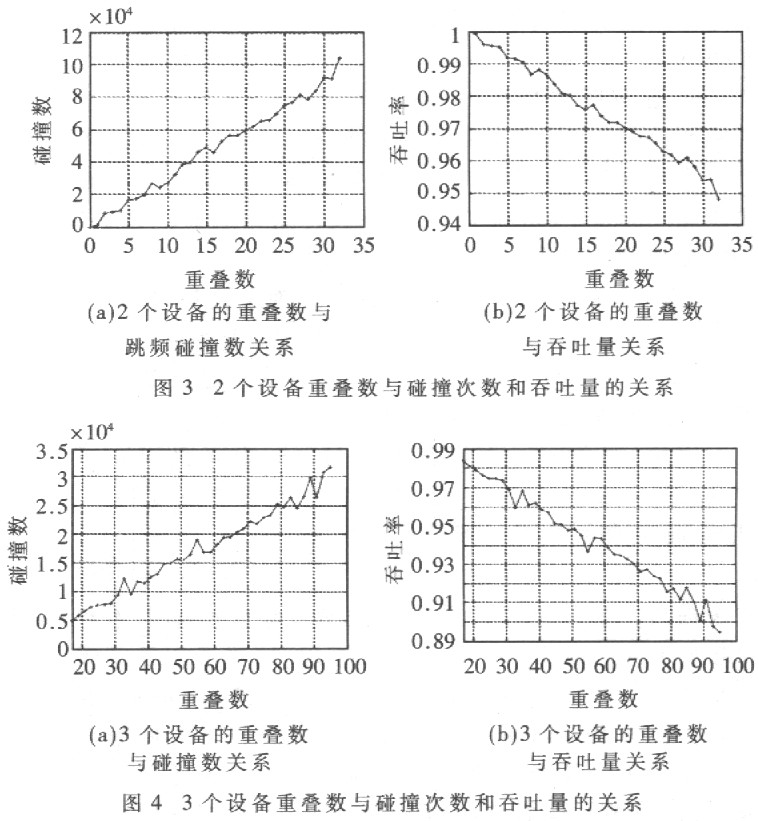
Figure 5 shows the simulation curves of the number of Piconets and the throughput when the packet length is 1 slot, 3 slots, and 5 slots, respectively. The results show that: (1) Under the same packet length, the throughput of the minimum overlap number is greater than the throughput of the maximum overlap number, and the performance becomes more obvious with the increase of Piconet; (2) The less the number of Piconet, the throughput The higher the amount; (3) The system throughput when the minimum frequency hopping section overlaps or the maximum frequency hopping section overlaps is almost independent of the packet length. In addition, it can be seen that when the number of Piconet is within 10, the effective utilization rate of Seattemet network bandwidth reaches more than 50%, but in the smallest overlapping section, the network throughput can reach more than 80%.
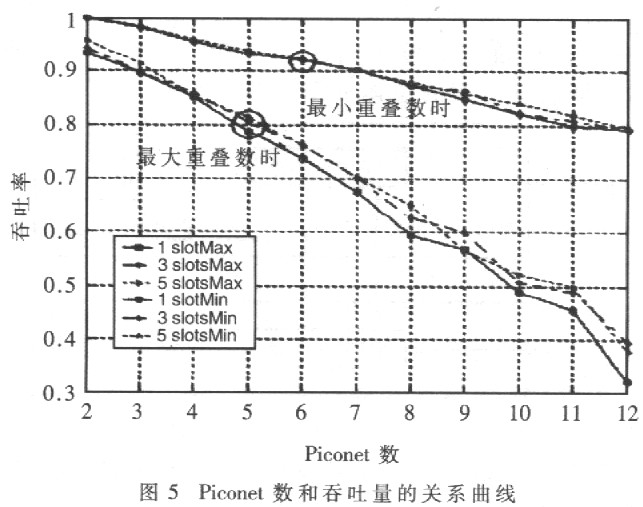
This paper analyzes the principles of collision and segment selection between Bluetooth frequency hopping micro-networks, and finds that when two Piconets have overlapping segments, frequency hopping frequency collisions may occur. The frequency hopping collision is related to the number of overlapping frequency hopping sections. The greater the number of frequency hopping section overlaps, the higher the probability of Bluetooth frequency hopping collisions and the smaller the network throughput, but the smaller the packet size contributes to the throughput. To increase the throughput of the Bluetooth network, the number of overlapping frequency hopping sections must be reduced. Therefore, when the number of Bluetooth network devices increases, an appropriate segment overlap selection algorithm must be used to reduce the number of segment overlaps and improve network throughput.
• Input/output Modules – Modular industrial grade I/O requiring no special handling, user addressing or configuration. Up to 128 modules per controller of analog, discrete, digital bus and special turbine-related I/O is available, including advanced fault diagnostics and channel isolation.
• Advant Ovation Interface (AOI) – A Gateway server connects each safety division data network to the non-safety real-time data network, providing strict one-way flow of real-time safety system data for display and control. Data flow is strictly one way from the safety to the non-safety subsystem.
WESTINGHOUSE Ovation DCS Cards: OVATION system, WDPF system, WEStation system spare parts.
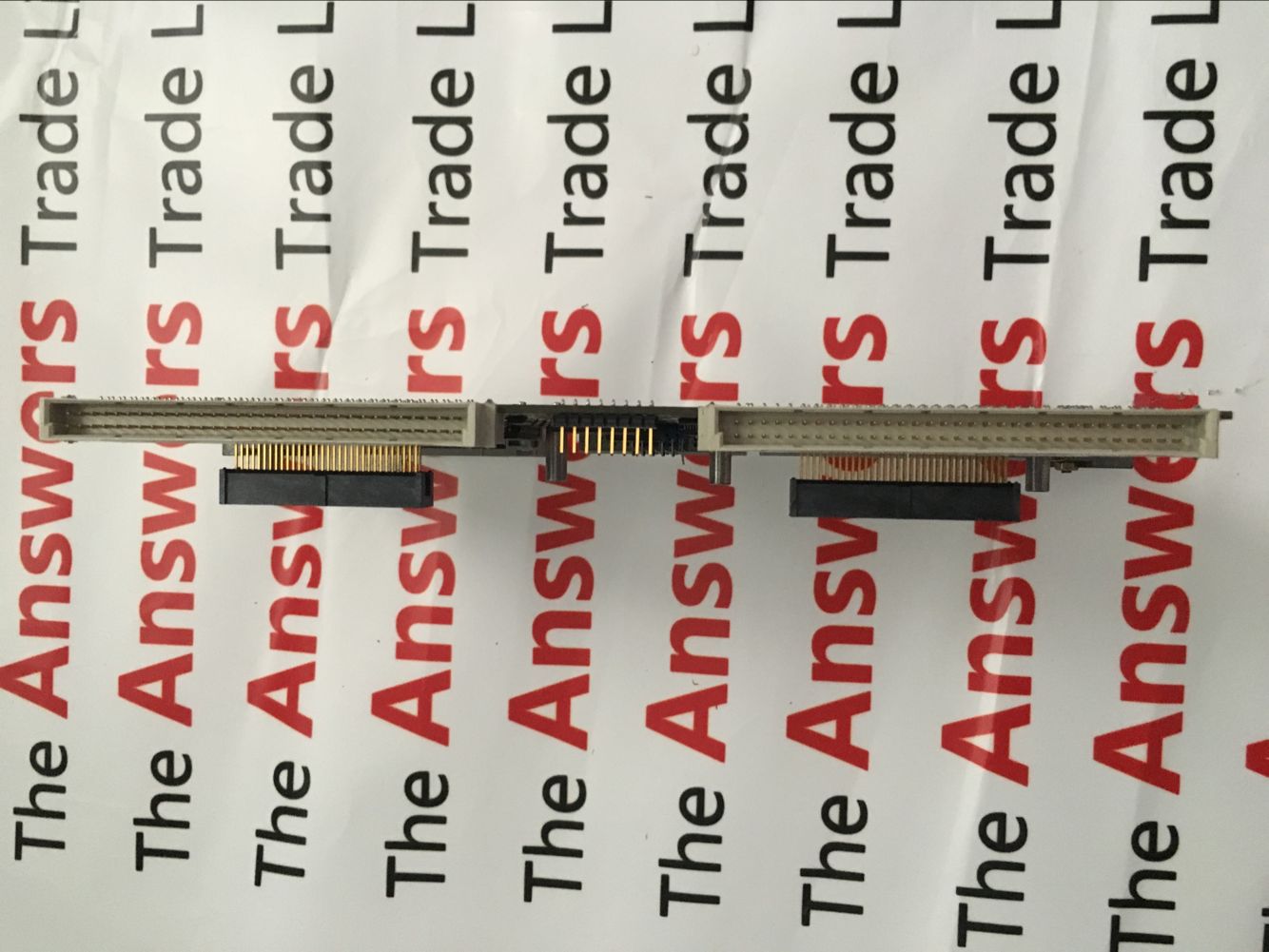
Westinghouse Ovation DCS Cards
Westinghouse Ovation DCS Cards,Emerson Base Assy
Xiamen The Anaswers Trade Co,.LTD , https://www.answersplc.com